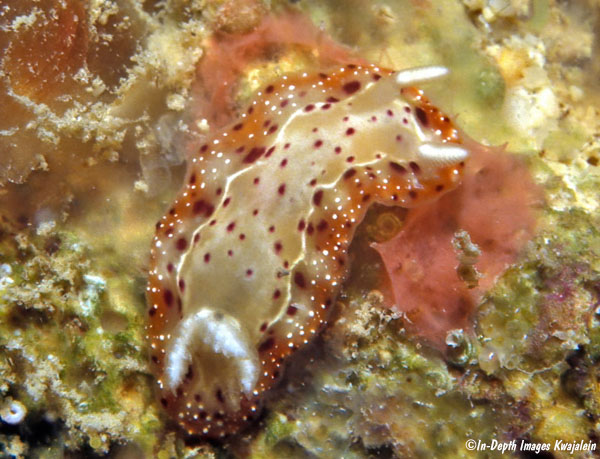
Goniobranchus decorus is most often found along lagoon interisland reefs at Enewetak and Kwajalein Atolls under chunks of dead coral at depths of about 3 to 8 meters. Several have also been found on lagoon pinnacles as deep as about 13m. Lengths of 17 specimens ranged up to about 16mm. Goniobranchus decorus seems to eat a variety of sponges, including the pink species this nudibranch is devouring in the photo below. Goniobranchus decorus was first reported in the Marshalls from Enewetak, Kwajalein and Bikini Atolls as Chromodoris decora by Johnson & Boucher (1984). It has since been reported from Rongelap Atoll by John and Lynette Flynn. The Marshall Islands specimens, and indeed those from other parts of the Indo-West Pacific, differ in at least one respect from the Hawaiian specimens originally described. The orange marginal band of specimens from the rest of the Indo-West Pacific is always studded with opaque white, small, round granules, possibly glandular in function, while those from the type locality of Hawaii always, or nearly always, completely lack those granules although they may have scattered white spots at the very edge of the mantle. This would not seem to be sufficient for separating the species, but it is a distinction that should be more fully examined. Separation from the similar species Goniobranchus setoensis is described later on this page.

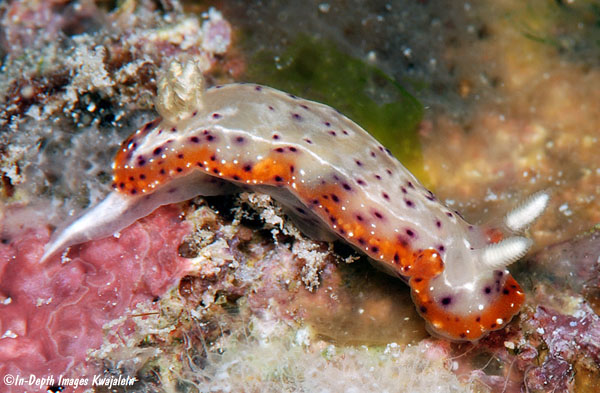
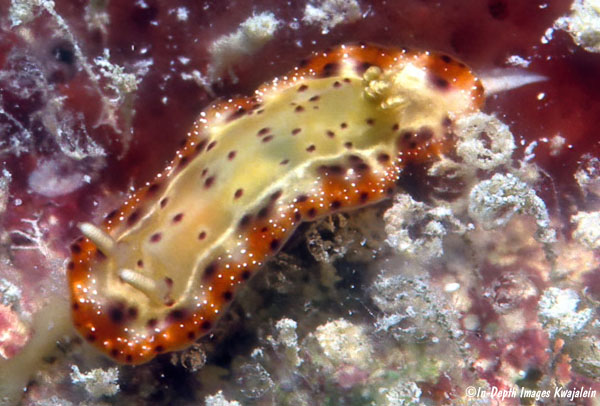
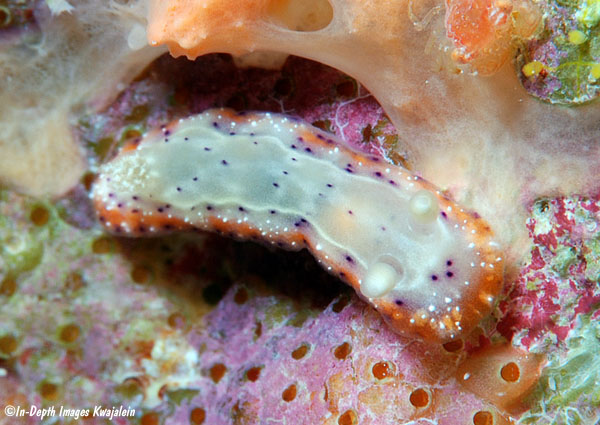
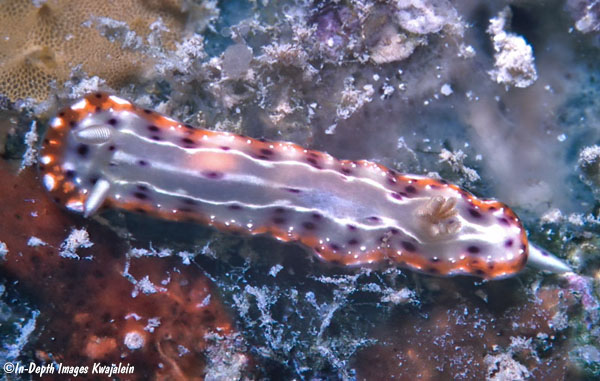
The one below is eating a yellow sponge.
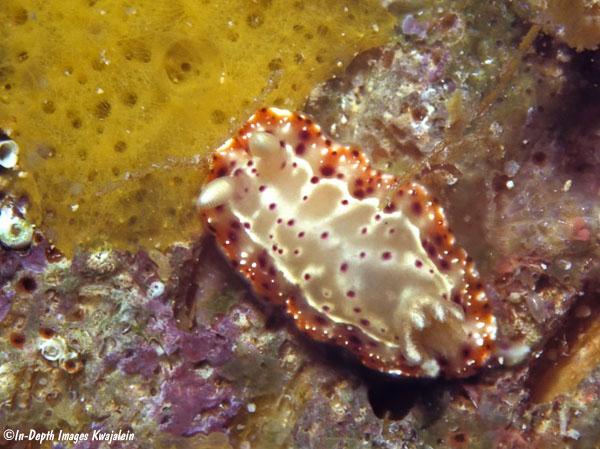
Another prey sponge for Goniobranchus decorus is this grayish one with the distinct lighter colored channels shown in the photo below. About one-third of the way from the rhinophores (upper left) to the gills (lower right) on this nudibranch you can see an orange mass through the translucent dorsal coloration. This is a portion of the reproductive system. Nudibranchs are hermaphrodites, so the reproductive is made up of a combination of male and female components. The orange is a mass of yolky material overlying a portion of the female gland mass, and this yolk is deposited in egg masses as a "cap" of yolk called an extra-capsular yolk body next to each egg. Within the chromodorid nudibranchs, only species within the genus Goniobranchus produce eggs like this, and for all of these species, the egg mass is deposited as a typical nudibranch spiral mass with one narrow edge attached to the substrate. Formerly, members of Goniobranchus were included in the genus Chromodoris. However, all members of Chromodoris appear to deposit their egg masses as a flattened spiral, with one of the wide edges attached to the substrate. It seems a rather distinct difference and warrants further investigation in a wider variety of chromodorid species. Recent examination of the DNA by Johnson and Gosliner et al (2012) indicates that this difference is real and warrants generic differentiation.

Another Goniobranchus decorus, this time apparently feeding on the purple sponge Chelonaplysilla violacea.
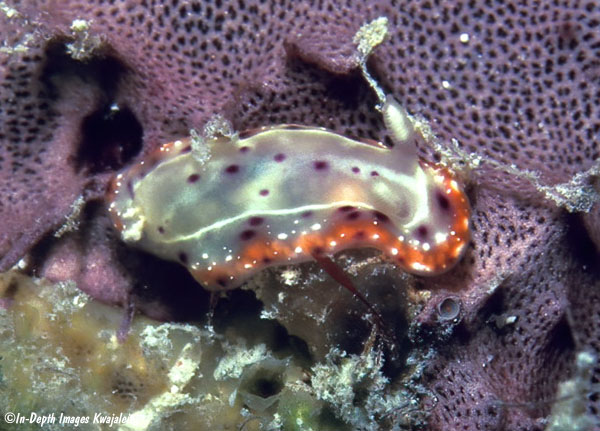
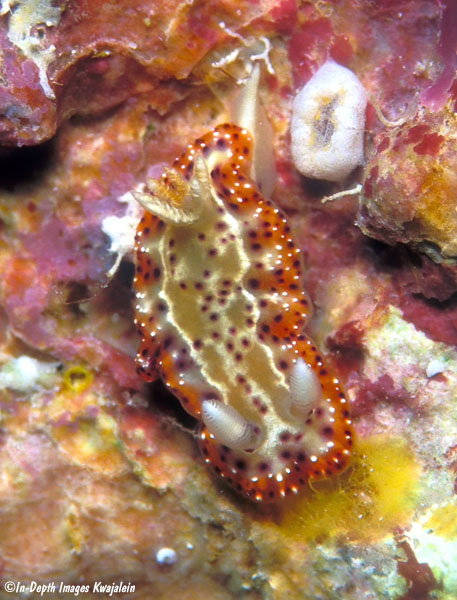
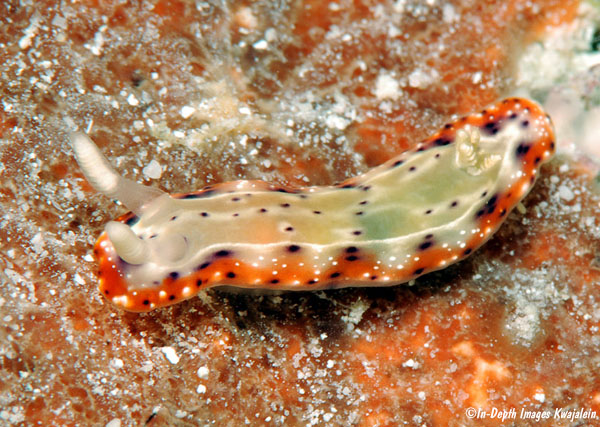
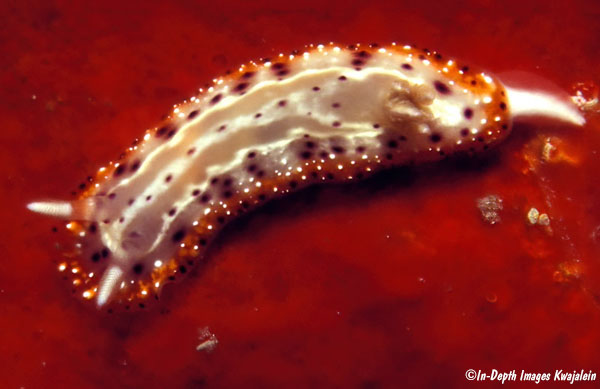
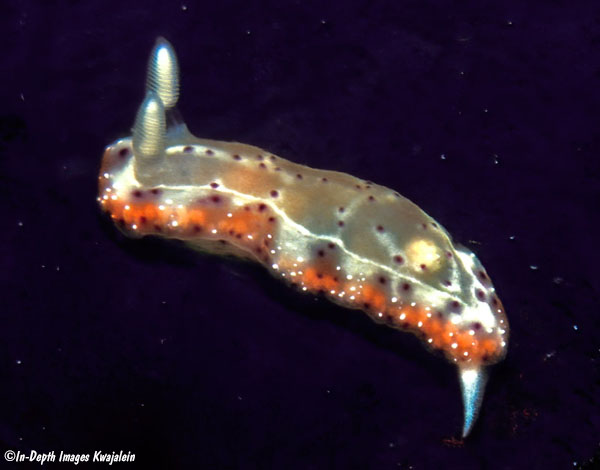
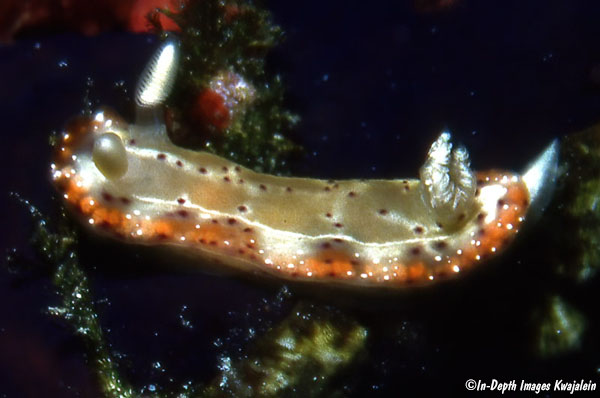
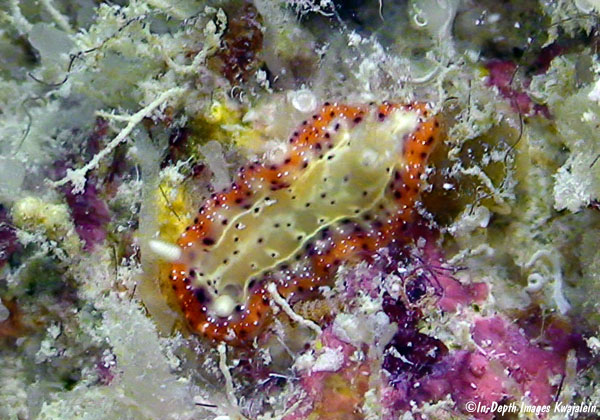
The next animal, photographed 2 March 2009 under a rock on a shallow lagoon reef at Kwajalein Atoll, and the pair after it from a large midlagoon pinnacle were definitely feeding on the purple sponge Chelonaplysilla violacea.
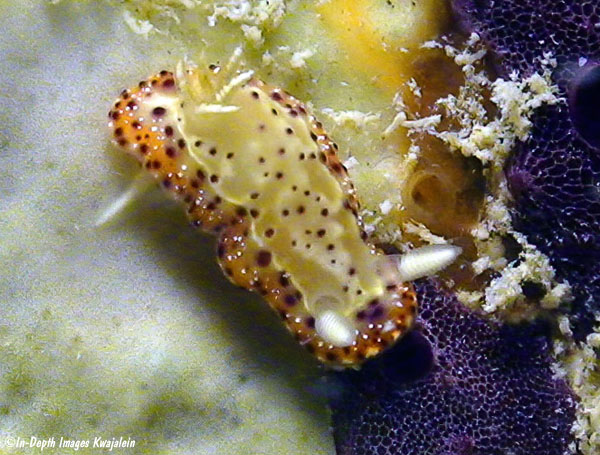
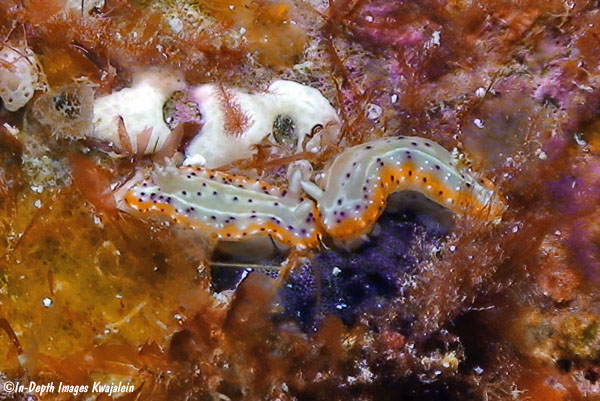
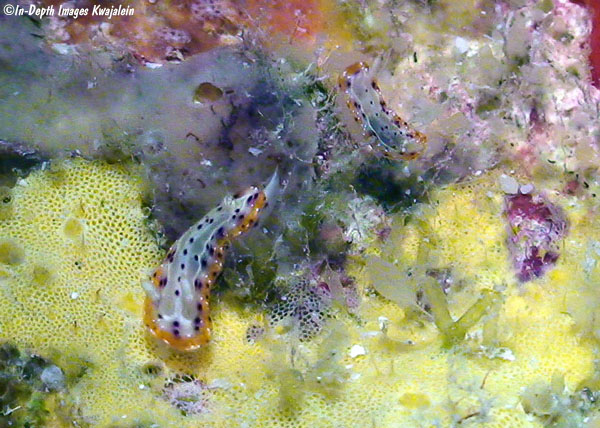
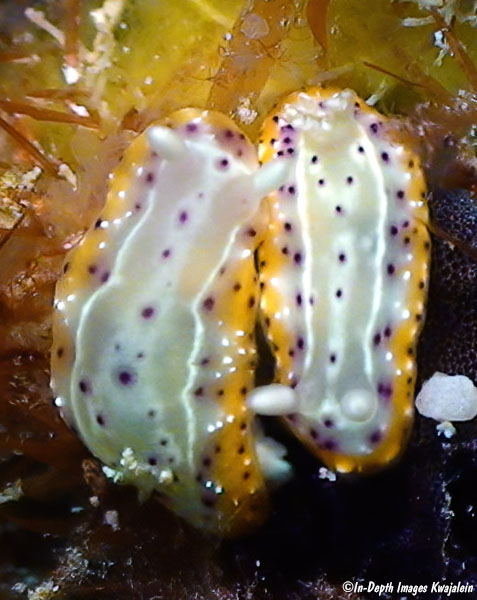
The general consensus among many nudibranch biologists is that Goniobranchus decorus is a variable species that includes both color forms shown in the photos below. [As I write this edit in 2024, the consensus does seem to be starting to lean towards there being two species.] I'm afraid I have to disagree. I think the nudibranch on the left side of the photo below is another species originally named from Japan and called Goniobranchus setoensis. While the basic color patterns are quite similar, the manifestation of those patterns consistently differ. Both forms basically have an orange to red marginal band containing white spots (which are probably glandular structures), both have purple spots submarginally, and both have the middorsal translucent creamy to tan colored (rarely yellow) zone bordered with white and often with a white line running down the middle that divides and surrounds the gills. I have observed hundreds of specimens in the Marshalls and in Hawaii, and can say there are consistent differences between the two forms. In Goniobranchus decorus, shown on the right, the white glandular structures tend to be smaller and scattered throughout the orange red margin. In G. setoensis, the white glands are concentrated along the edge of the mantle. Likewise, the purple spots in G. decora are smaller and scattered, and extend into the middorsal coloration, particular on the white middorsal bands and patches (when such patches are present). The purple spots of G. setoensis are large and mostly confined to a submarginal band. In G. setoensis, the middorsal white band that branches to encircle the gills is distinct and consistent; the comparable area of G. decora is variable, often indistinct, and frequently with additional branches or patches of white adjacent to the middorsal band. Finally, in the Marshalls where both species are present and in essentially the same habitat, we occasionally find these species in pairs or even in threes; in all cases, they pair up only with another or others of the same color form. We do not find them mixed. The pictures below are artificial; the two species were placed together just to take a comparative photo. They were not found together. Also, in Hawaii, Goniobranchus setoensis (or that color form, if you prefer) does not occur; only the G. decorus form is found in Hawaii, where it is common.
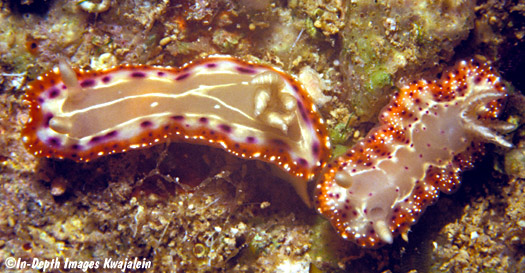
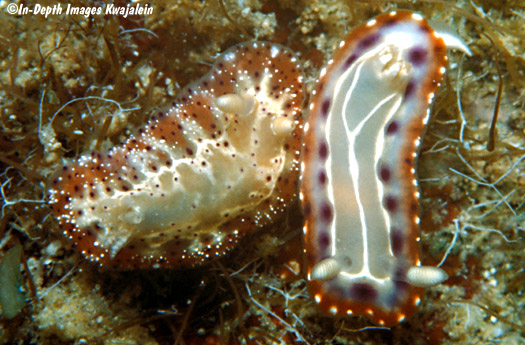
Created 14 December 2005
Updated 31 December 2024